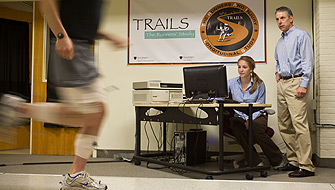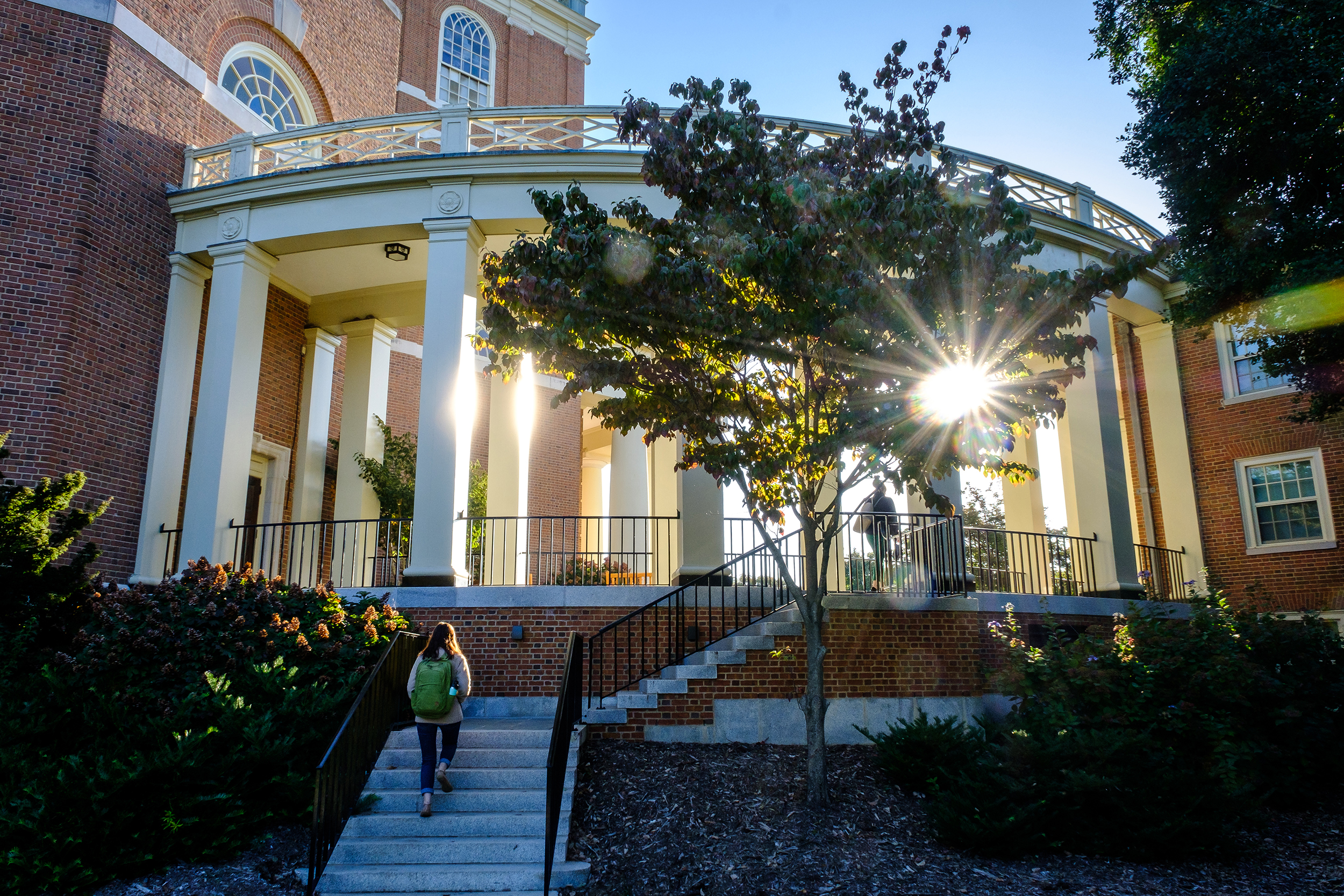Running research
Up to 65 percent of runners sustain an overuse injury each year. Wake Forest researchers, funded by a $600,000 grant from the U. S. Army, plan to find out why.
The two-year study, called The Runners and Injury Longitudinal Study or TRAILS, will determine the differences between runners who sustain an overuse injury and those who remain injury free.
Led by Professor of Health and Exercise Science Steve Messier, the study will examine biomechanical, behavioral and physiological risk factors for injury.

Health and Exercise Science professor Steve Messier and graduate student Mackenzie Hoops watch senior Greg Billington ('11) run on the test track.
Co-investigators include Shannon Mihalko, health and exercise science; David Martin, orthopaedic surgery and sports medicine; Claudine Legault, public health sciences; Paul DeVita, East Carolina University; Wayne Cannon, Wayne Cannon Physical Therapy and Associates; and Joseph Seay, United States Army Research Institute of Environmental Medicine (USARIEM).
This month, the researchers will begin recruiting 180 distance runners (aged 18 to 60) to participate in TRAILS. Recruitment will last for 12 months.
The study is funded by the Army Research Office (ARO). Running injuries are an important issue for the U.S. Army because medical disability discharge rates have increased over 600 percent in the past 25 years. Many of those discharges are due to knee pain and other running-related injuries.
Other common running injuries include medial tibial stress syndrome (shin splints), plantar fasciitis, Achilles tendinitis, and iliotibial band friction syndrome.
“Results from this study will provide multi-disciplinary insight as to how gait mechanics, training behaviors and physiological variables may combine to predict whether a runner will sustain a common overuse injury or remain injury free,” said Messier, who is also well-known for his work on the effects of exercise and weight loss on gait, strength, function and pain in older adults with knee osteoarthritis.
To participate in the study, runners have to be running a minimum of five miles per week and be injury free for the past six months. They must also live within 100 miles of campus.
Working in the J.B. Snow Biomechanics Laboratory in Reynolds gymnasium on campus, researchers will measure participants’ strength and flexibility and complete a comprehensive evaluation of their running gait. Research study participants will also complete a survey of their training and injury history and periodically respond to e-mailed questions.
If interested in participating in the study, e-mail trails@wfubmc.edu or call 336-758-3728.
During a running test, researchers place reflective markers on the runner and then create a video to analyze the person’s running mechanics. They can measure joint forces and angles and make comparisons with other runners. Below are two example videos:
https://www.youtube.com/watch?v=23DRU6CZ2pk
https://www.youtube.com/watch?v=tUCxpyRbOck
Categories: Community Impact, Research & Discovery, University Announcements
Media Contact
Wake Forest News
media@wfu.edu
336.758.5237



